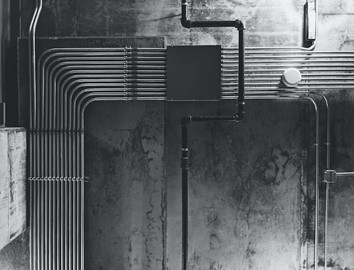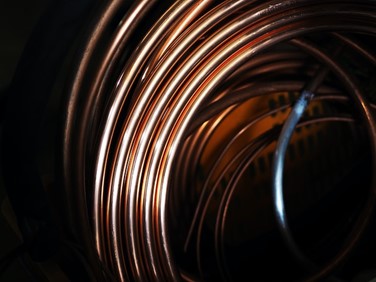Heat exchangers are the unsung heroes of the food industry.
They are responsible for proper refrigeration and sanitization. They heat water needed for good pasteurization and sterilization. Without heat exchangers, the quality of the food we eat daily would be compromised.
But the scope of the work and benefit of heat exchangers goes far beyond protecting food. It would simply be hard to live without them.
Heat Exchangers Explained
Any device that aids in the process of the exchange of heat between two fluids of different temperatures is considered a heat exchanger. Generally, they are either systems or devices capable of transferring heat from one source to another.
They are essential tools to transfer energy from one gas or fluid to another while being able to keep the substances separate. A heat exchanger is considered both common and essential across numerous industries since energy conversion must include transitioning some part of a form of energy into heat.
Because of that, heat transfer is vital in nearly all forms of apparatuses and machines.
Applications
The basic heat exchanger is used to cool one type of liquid while heating another, but different heat-exchanger forms can be found in a slew of technological processes.
Heaters and coolers run because of heat exchangers. A heater needs to transfer heat to a gas or liquid simply by coming in contact with a surface that is heated. Water is used to cool gas and liquids in coolers.
Heat exchangers are needed in condensers and chillers as well. A mixture of vapors or steam is condensed with gases that are non-condensing through the use of a heat exchanger.
A chiller is a heat exchanger that cools a liquid with refrigerant and either an absorption refrigeration cycle or vapor compression. Other applications include superheaters, evaporators, and reboilers.
While heat exchangers have long been available, companies continue to modernize and innovate models. For example, both shell and tube and immersion fluoropolymer heat exchangers are available through Fluorotherm’s website. There are also spiral heat exchangers and plate heat exchangers.
 Industry Use
Industry Use
Heat exchangers are used primarily to replace old industrial exchangers, achieve a desired temperature, and make the heating and cooling process more efficient.
People likely encounter some form of heat exchanger every day. They are found in public places, such as swimming pools, as well as in car engines, food storage, power generation, and transportation. They are used to pool the propulsion motors of nuclear submarines.
Different types of heat exchangers are common in certain industries. For example, a shell and tube heat exchanger are used in oil refining and cooling, industrial paint systems, and vapor recovery systems.
A plate exchanger is essential for food processing, in furnaces, and in cryogenics.
Condensers are always found in power plants, HVAC systems, and refrigeration. Steam trainers need boilers and evaporators. Engineering relies on heat exchangers. The adiabatic wheel form of a heat exchanger is used in petroleum refineries, petrochemical processing, and the aerospace industry.
And the compact version of heat exchangers is a game-changer when it comes to having limited space. Without them, cars and planes simply would not run efficiently.



